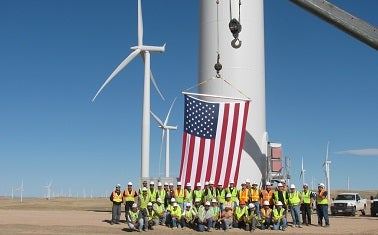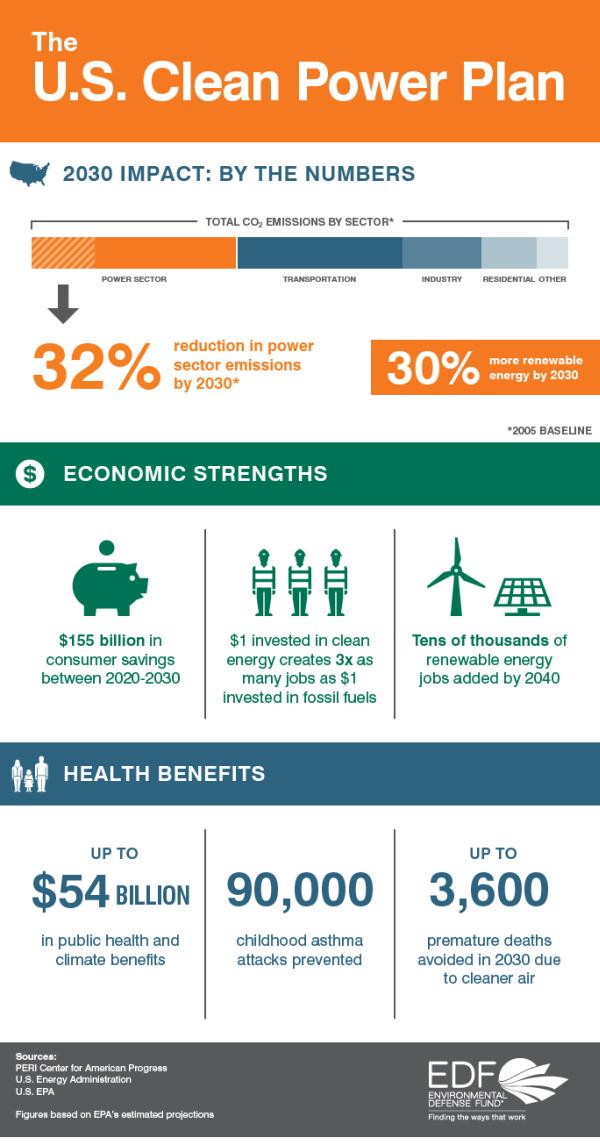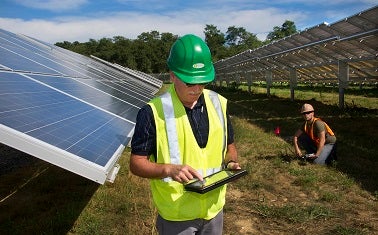 (This post originally appeared on EDF’s Energy Exchange blog)
(This post originally appeared on EDF’s Energy Exchange blog)
On Monday, the Environmental Protection Agency (EPA) announced the Clean Power Plan, the first initiative of its kind to curb carbon dioxide (CO2) emissions from existing U.S. power plants. By improving air quality, the plan promises to prevent 90,000 childhood asthma attacks and avoid up to 3,600 premature deaths each year – without compromising economic growth. In fact, the Clean Power Plan is an incredible economic opportunity that states can’t afford to miss.
By limiting power plants’ “free pass” to pollute, EPA projects their Plan will deliver billions of dollars in environmental and public health benefits each year – and that’s just the start. Here are three ways in which the Clean Power Plan will work to strengthen states’ economies and accelerate many of the clean energy trends already underway:
1) It will pave the way for hundreds of thousands of clean energy jobs.
The clean energy economy is already delivering more quality jobs than the fossil fuel industry. Solar energy, for example, now employs more Americans than coal mining – 142,698 versus 89,838 – while the entire renewables industry employed over 700,000 Americans in 2014. Furthermore, one dollar invested in clean energy today creates three times as many jobs as a dollar invested in fossil fuels. And under the Clean Power Plan, this trend will accelerate with the potential to create a quarter-million jobs by 2040. That’s because many states will choose to comply with EPA regulations by ramping up renewable energy – an industry that is more labor-intensive and creates more jobs per dollar invested than the highly-mechanized fossil fuel industry. Clean energy installation also relies more heavily on local workers, increasing the amount of locally-invested dollars and related economic benefits to communities (in contrast to coal plants, whose investments are mostly funneled to out-of-state mining companies).
2) It will lower household electricity bills.
One powerful way states can choose to implement the Clean Power Plan is by employing more energy efficiency and renewable energy resources. Energy conservation could include everything from state-wide weatherization programs to smart electricity pricing – like demand response and time-of-use-pricing, which work to save people electricity and money. Because after all, the cheapest kind of electricity is the kind we don’t use in the first place. EPA projects that the Clean Power Plan’s flexible framework will enable a total of $155 billion in electricity savings between 2020-2030 – reducing enough energy to power 30 million homes. And, EPA went one step further to ensure these energy savings reach the communities that need them most. Through the Clean Energy Incentive Program, the Clean Power Plan prioritizes early investment in energy efficiency projects in low-income communities by rewarding states for implementing these programs. These incentives, along with the plummeting cost of renewables like solar, will make clean energy solutions the increasingly affordable compliance option. According to the EPA, this means that by 2030, when the Plan is fully implemented, electricity bills are expected to be roughly seven percent lower than they would be without any state action. Put another way, U.S. families will be saving on average $85 a year on their electricity bills. And that’s money they can pump back into our economy.

Click to Enlarge
3) It will spur greater technology innovation and entrepreneurship.
EPA’s plan – once implemented – will send a strong market signal to entrepreneurs, businesses, and venture capitalists to move full-steam ahead with new, clean energy innovations. Under current market conditions, the advanced energy economy is already outpacing the U.S. airline industry, and roughly equal to the pharmaceutical business – and this growth will be accelerated under the Clean Power Plan. History has proven that these kind of smart, commonsense energy policies spur economic growth and innovation. In California, for example, since the passage of AB 32 (the state’s carbon pollution-reduction law), cleantech jobs alone have grown ten times faster than in other sector over the past decade, and since 2006, the state has seen investments of $27 billion in clean energy venture capital. California experienced this remarkable growth all while lowering its carbon emissions. Under the Clean Power Plan, we can do this on the national scale too with the right market signals.
Political support for a thriving industry
EPA’s Clean Power Plan provides states with tremendous flexibility in deciding how to achieve their emission reduction targets, in ways that build upon our already-thriving clean energy economy. Most states have already taken great strides towards meeting the Clean Power Plan’s targets, making them well-positioned to meet regulations by the newly-extended 2022 deadline. Whether a state’s economy thrives is a matter of the choices by state policy makers.
I think my friend and colleague, Fred Krupp sums up this economic opportunity best:
The states that join this race first, and run it the fastest, will win both more investment in clean technologies and less air pollution for their communities. No single step will fix climate change, but the Clean Power Plan is also a catalyst for more and quicker pollution reductions in the future, as we continue to innovate and grow the economy.
The Clean Power Plan is an important step toward establishing policies that will bolster and encourage our existing clean energy economy. We have the tools, technology, and innovation to turn the corner on climate change – we welcome the regulations to support them.
Photo Source: Duke Energy


 Old, dirty power plants will be retired
Old, dirty power plants will be retired